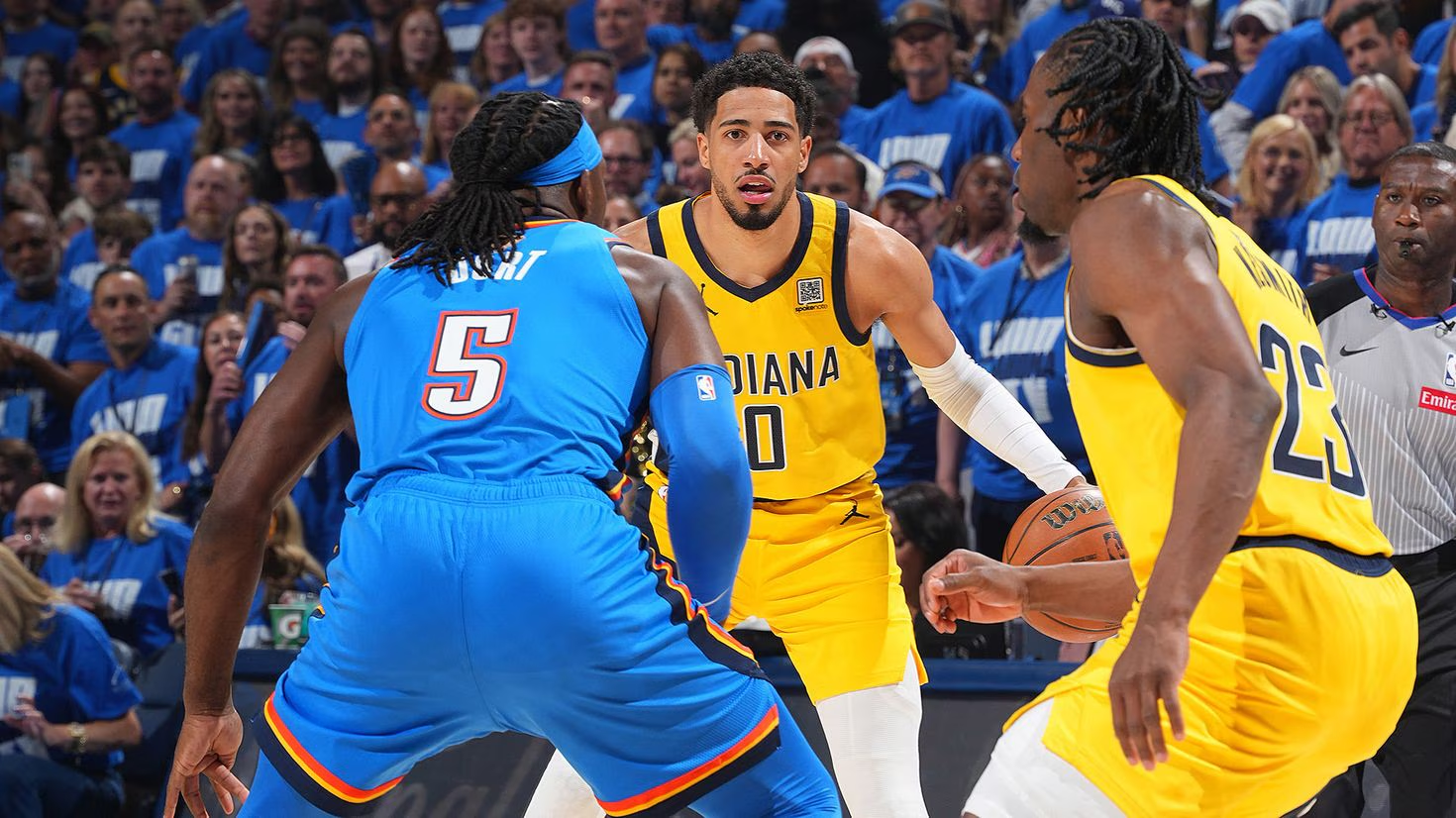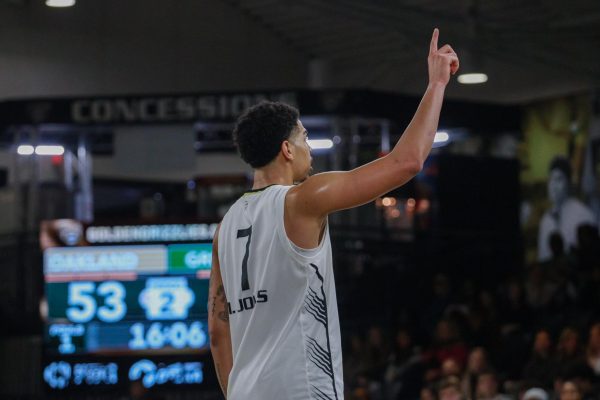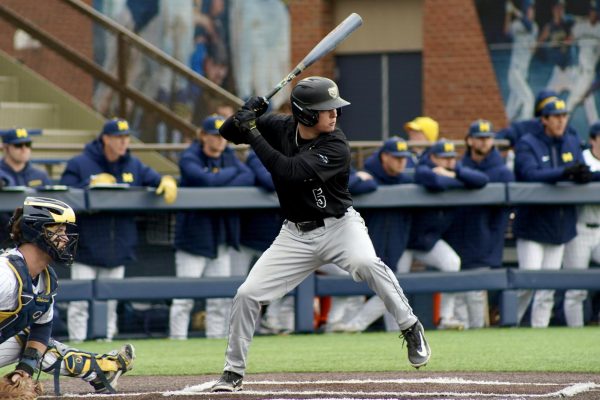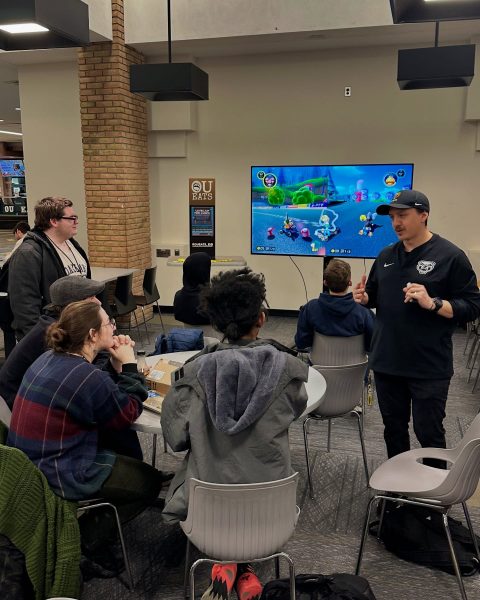High hopes for recruits
For years the best high school basketball players in the state of Michigan would look past Oakland University when signing their letters of intent. Only in recent seasons has the prospect of donning the Grizzlies’ black and gold jersey become such an appealing option for players looking to compete nationally at the college level.
In Greg Kampe’s 26 seasons as head coach, he has steadily built the OU men’s basketball program into a perennial winner, and with that success came better recruits.
“I think the growth and success of our program is enabling us to get more involved with higher-ranked players,” Kampe said. “I just think that we’ve made a mark on the college basketball scene.”
That mark can be seen clearly in the last two recruiting classes he’s brought in. This year’s crop of freshmen is a strong follow-up to last season’s haul which included three top 10 in-state recruits — Blake Cushingberry, Drew Maynard and Jay Thames. Maynard and Cushingberry became solid contributors last season, while Thames will look to make an impact this year after a year of development.
For avid followers of high school basketball in the state of Michigan, two of Oakland’s 2009 recruits will likely sound familiar.
Drew Valentine, a two-sport athlete from Sexton High School in Lansing, received offers from out-of-state schools like Drake and George Mason universities until he sustained a serious knee injury in September 2008 while playing football. Most of the schools that sent him offers to play basketball pulled them off the table. Oakland’s offer remained.
“I always wanted to play Division I basketball and after I hurt my knee during the football season, Oakland was one of the only few schools that still wanted to recruit me,” Valentine said. “I knew they were going to be loyal to me, after that.”
Valentine, who is projected to play small forward, averaged a double-double throughout his junior season in high school.
Another of Oakland’s recruits, Travis Bader, received offers from schools like Lake Superior State, Northwood and Central Michigan. The 6-foot-4-inch shooting guard went to Okemos High School — the same school that current Grizzlies point guard, Johnathon Jones attended.
While the two of them never played on a team together, Jones had an impact on Bader’s commitment to Oakland.
“He talked to me a little bit, mainly about what I wanted to do for college. He pointed me more toward Oakland and showed me the positive aspects,” Bader said.
The third recruit of the 2009 class, Ledrick Eackles, is a name not likely to ring a bell for basketball fans in Michigan. Eackles attended high school in Louisiana — a part of the country that Oakland, in the past, would have had trouble recruiting from. He received offers from BCS conference schools such as Tulane, Nebraska, and Southern Miss, but chose to attend OU instead.
Eackles, whose father played in the NBA for seven seasons, may surprise you when he talks about the biggest adjustment he faces these days.
“The weather is way, way different [in Michigan]. I think I’m already sick,” Eackles said with a laugh.
He said that his teammates are helping to ensure that he settles in to his new home at OU, over 1,000 miles north of Louisiana.
“I spend a lot of time with all my teammates; we’re just like a big family, we always do things together. There’s never a time when we’re not with each other,” Eackles said.
With more exposure and higher-level recruits comes a greater pressure to perform. Many basketball publications and websites are picking Oakland as the odds-on favorite to win the Summit League Championship this season, and that point isn’t lost on these incoming freshmen.
“Definitely, I feel like there’s pressure no matter what your role is. As a practice player or anything else, you have to perform your best and make sure the team is ready to go,” Bader said.
Each recruit has individual skill sets that should mesh well into the fabric of this veteran-laden team, leaving Kampe and his coaching staff with some tough decisions when assigning redshirts and playing time. This is a problem, however, that plenty of college basketball coaches would love to have.
It was mostly Bader’s shooting ability — 49 percent overall, 43 percent from three-point range during his senior season — that most helped him gain admirers from college scouts.
At Sexton, Valentine was a hybrid forward who was able to provide a lot of energy for his team. That mindset hasn’t changed since his transition to Oakland.
“I just try to go out there and do the little things, the small stuff that nobody notices,” Valentine said.
Eackles has been described by several scouting services as a threat on both the offensive and defensive ends of the court, preferring to drive the lane and create contact. Like Valentine, he also said he considers himself an energy player.
“I love energy and dunking the ball. I consider myself a scorer, but take more pride in my defense,” Eackles said.
One thing that all the recruits stressed was the commitment and dedication they receive from Kampe and the rest of the coaching staff.
The roles of these players remain undefined for the upcoming season. No decision has been made on whether any of them will take a redshirt season for developmental purposes. Kampe said he would likely make that decision by early November.
“I would suspect that one or two of the three [freshmen] will get minutes and play a role for us. Maybe all three of them will get minutes and play a role,” Kampe said. “As far as freshmen redshirting, I think you’re always a lot better when you’re 23 than you are when you’re 18, so I think redshirts [can be] good.”
Kampe also said that he has never used 12 players in a season with any regularity in his career.
“All three are going to play an important role in Oakland basketball over the next four or five years,” Kampe said. “I hope they don’t play an important role this year, you know, because if you’ve got to rely on freshmen, that means you’re not going to be very good. And we think we’re going to be pretty good.”
—Dan Fenner contributed to this report






